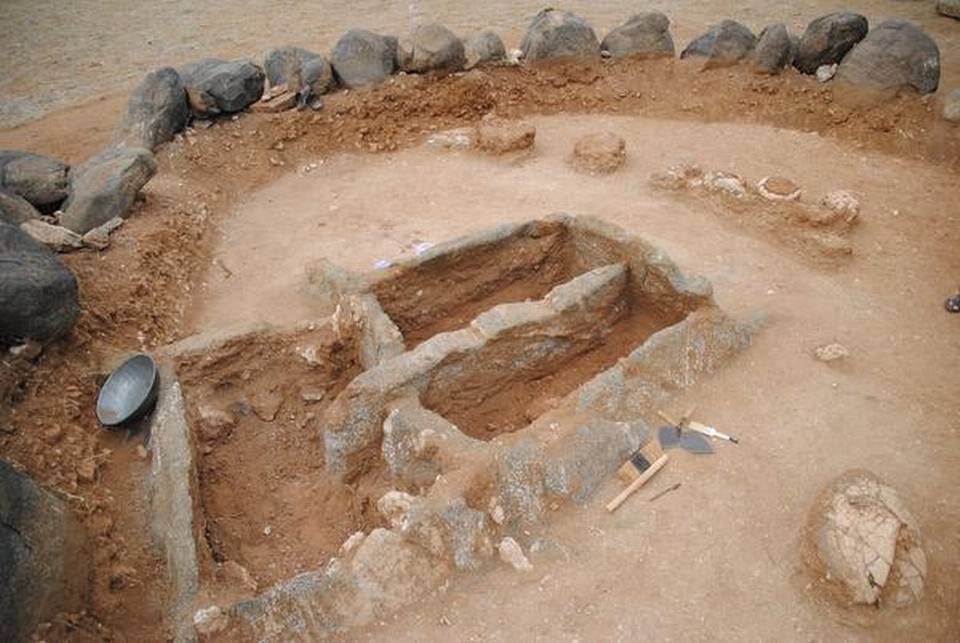Indian History
Kodumanal Excavation
- 19 Jun 2020
- 3 min read
Why in News
Recently, the State Department of Archaeology, Chennai has identified 250 cairn-circles from the Kodumanal excavation site in Erode district of Tamilnadu.
- Cairn-circles are the prehistoric stone row which is a linear arrangement of parallel megalithic standing stones.
- A megalith is a large prehistoric stone that has been used to construct a structure or monument, either alone or together with other stones.
Key Points
- This is for the first time that 10 pots and bowls were discovered from the site, instead of the usual three or four pots, placed outside three-chambered burial cists and inside the cairn-circle.
- More numbers and bigger size of boulders suggests that the grave could be of a village head or the head of the community.
- It also suggests burial rituals and the concept of afterlife in megalithic culture. Believing that the deceased person will get a new life after death, pots and bowls filled with grains were placed outside the chambers.
- The rectangular chambered cists (a small stone-built coffin-like box) are made of stone slabs, and the entire grave is surrounded by boulders that form a circle.
- Findings from the site also include an animal skull, beads, copper smelting units, the mud walls of a workshop, potteries, and Tamil Brahmi script.
- Previous Excavations:
- The earlier excavations of Kodumanal revealed that multi-ethnic groups lived in the village.
- It also revealed that the site served as a trade-cum-industrial centre from 5th century Before Common Era (BCE) to 1st century BCE.
Megaliths Culture
- Megaliths refer to large stone structures that were constructed either as burial sites or as commemorative sites.
- The burial sites are the sites with actual burial remains, such as dolmenoid cists (box-shaped stone burial chambers), cairn circles (stone circles with defined peripheries), and capstones (distinctive mushroom-shaped burial chambers found mainly in Kerala).
- The megalithic culture lasted from the Neolithic Stone Age to the early Historical Period (2500 BCE to CE 200) across the world.
- In India, the majority of the megaliths are of the Iron Age (1500 BC to 500 BC),
- Megaliths are spread across peninsular India, concentrated in the states of Maharashtra (mainly in Vidarbha), Karnataka, Tamil Nadu, Kerala, Andhra Pradesh and Telangana.
- The chambers containing the mortal remains were usually made of terracotta.
Kodumanal
- It is a village located in the Erode district in the southern Indian state of Tamil Nadu.
- The place is an important archaeological site.
- It is located on the northern banks of Noyyal River, a tributary of the Cauvery.







